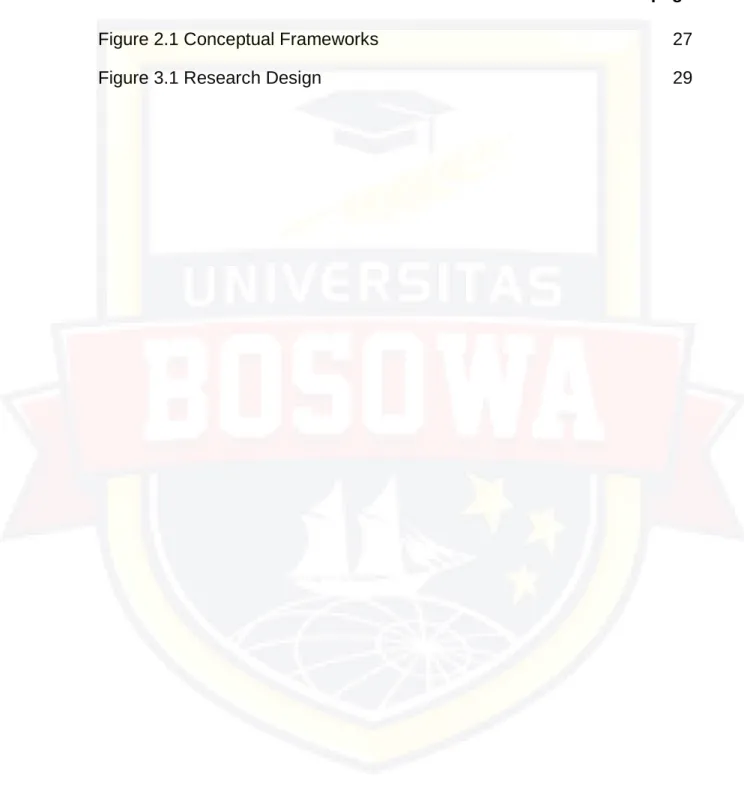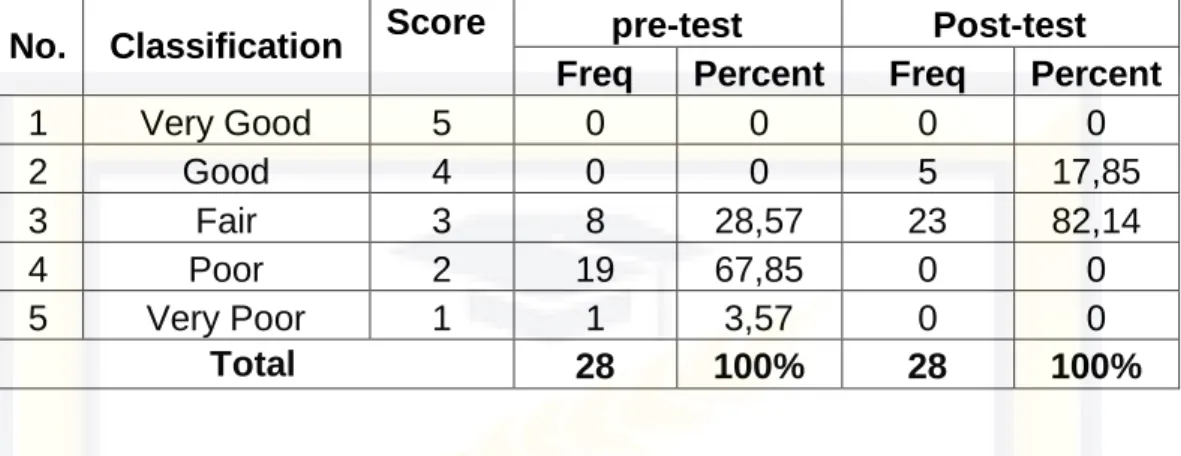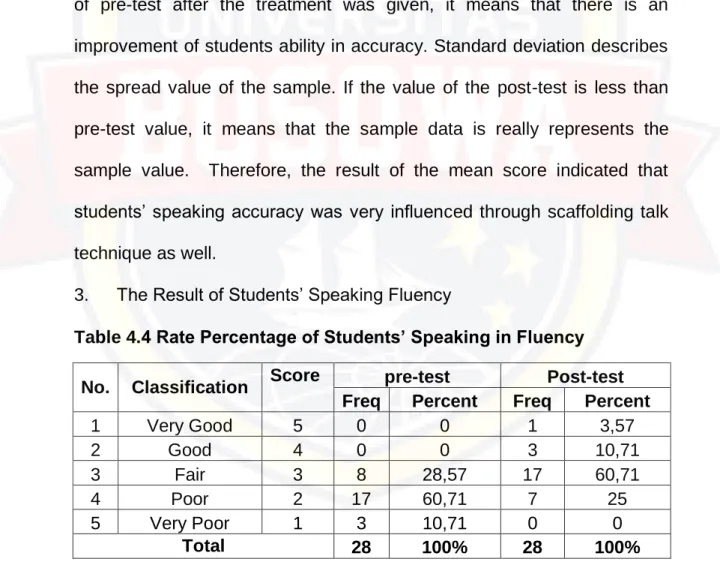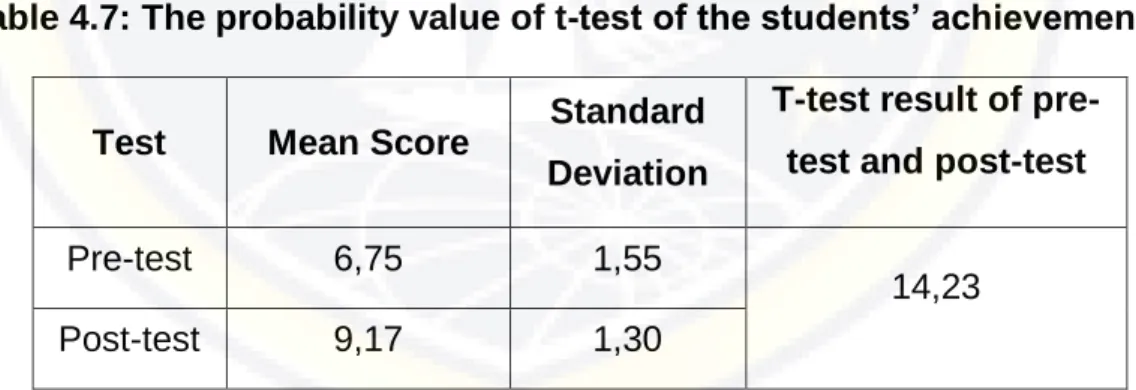Makassar, September 2017 Yang membuat pernyataan. about the speaking skills of students in the eleventh grade of SMA Negeri 7 Makassar. The aim of this research was to know the application of the scaffolding talk technique to students' speaking skills. From this result, it can be concluded that the scaffold talking technique was effective to increase the speaking skills of students in class XI of SMAN 7 Makassar in academic year 2017/2018.
Kata Kunci: Teknik scaffolding, keterampilan berbicara. pada kemampuan berbicara siswa kelas sebelas SMAN 7 Makassar. dipimpin oleh Andi Hamzah Fansury dan Ulfah Syam).
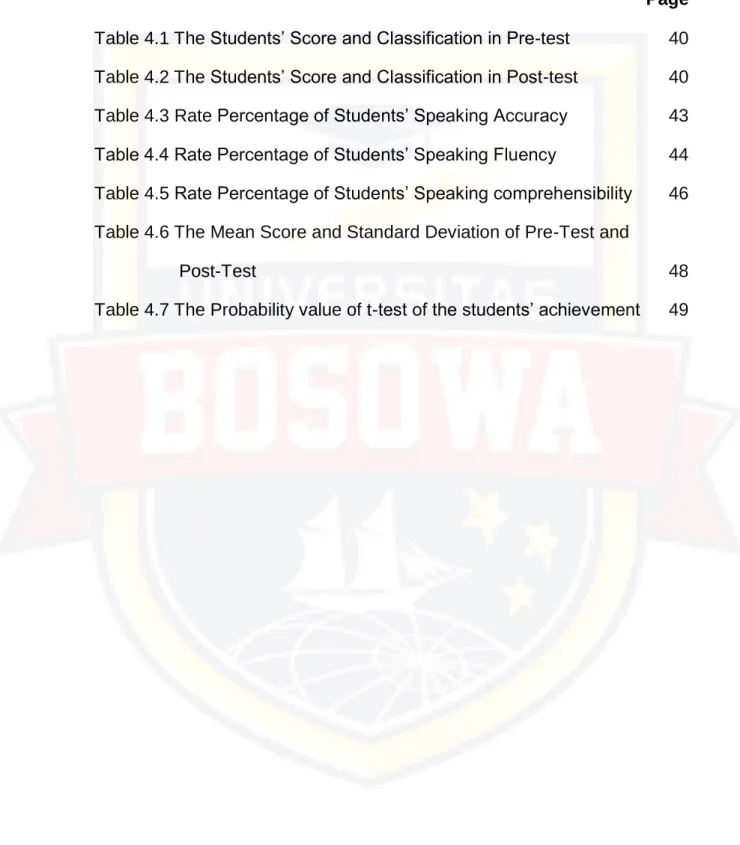
INTRODUCTION
Background
One of the techniques that the teacher can use in the speaking class is Scaffolding Talk technique. Scaffolding refers to a variety of instructional techniques used to move students gradually toward stronger understanding and ultimately greater independence in the learning process. According to Zulfa i Rahmawati (2015:2), scaffolding is widely considered to be an essential element of effective teaching, and all teachers – to a greater or lesser degree – almost certainly use various forms of instructional scaffolding in their teaching.
One of the main goals of Scaffolding Talk is to reduce the negative emotions and self-perceptions that students may experience when they are frustrated, scared, or discouraged when they try to complete a difficult task without the help, guidance, or understanding they need to complete it.
Research Question
Objective of the Research
Significance of the Research
Regarding the above background, the researcher is interested to conduct a study titled “The Implementation of Scaffolding Talk Technique on Students’ Speaking Ability at SMAN 7 Makassar. It can lead to future researchers as it will be a good foundation to know why students have low performance in speaking skills and solving them. From this research, the writer can learn how to motivate the students to improve speaking skills and study.
Scope of the Research
Some Previous Research Findings
According to Rahmawati (2015) Based on her result from the researcher's chapter IV which was done in the two cycles of the study entitled “The Use of Scaffolding Talk Technique to Enhance Students' speak Skill in Compitting Recount Text Class VIIIB in MTs Negeri Andong in the academic year 2013-2014”. The findings show that the improvement in the speaking skills of the students is significant after the students have learned the Scaffolding Talk technique. The author concludes that when teaching speaking skills, a teacher should have a strategy to make students more interested and motivated to learn.
Based on the previous studies linked above, the researcher wants to prove that teaching speaking to students will be more effective if the teacher teaches students with fun, interesting and keeping in the environment like scaffolding technique.
Some Pertinent Ideas
- Some Theories of Speaking Skill a. The Definition of Speaking
- Scaffolding Talk
Based on her result from chapter IV of the researcher which was conducted in two cycles in the research entitled “The use of stage conversation technique to improve the speaking skill of students in composing repetitive text of class VIIIB in MTs Negeri Andong in Academic Year. Teachers must guide students to develop to master fluent speaking (Rasinski in Atakana Comprehension. Pollard in Atakana speaking is one of the most difficult aspects for students to master.
It is the differences between the students' actual developmental level determined by their ability to master the task independently.
More responsive protégé of vision loss and visual will be able to accept more responsive protégé greater auditory. It also affects the success of English-speaking atmosphere in the classroom (Listyaning and Zulfa in Rahmawati, 2015:15). Speaking skill is the ability to speak fluently, not only presupposes knowledge of language features, but also the ability to process information and language on the spot (Harmer in Rahmawati, 2015:15).
In this work, the writer used the method because there are students' problems, especially in the speaking subject. In the experimental work, the writer used the technique of speaking on the stage and it arouses students' interest to speak.
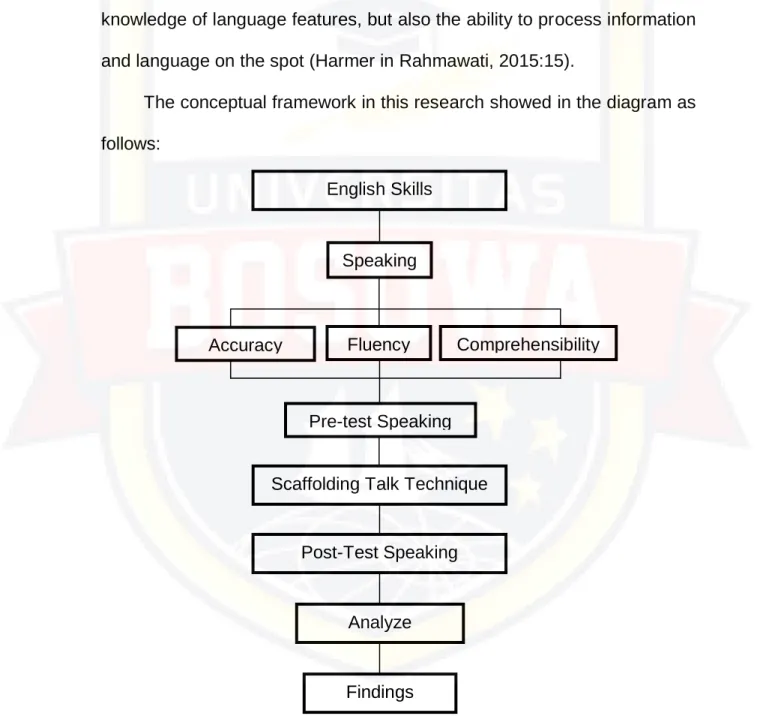
Hypothesis
RESEARCH METHOD
Research Design
Location and Time of the Research
Variable and Operational Definition
Population and Sample a. Population
In this research, the researcher used a purposive random sampling technique by choosing the 11.IPA IV class with the amount of 28 as the research sample.
Instrument of the Research
Procedure of Collecting Data 1. Pre-test
- Treatment
- Post-test
In the first meeting, the researcher made a preparation, which is the signing of the work by small groups (pairs). That in the second meeting, the writer gave motivation as well as an explanation about the importance of the ability to speak in small groups (pairs) and at the end the researcher asked questions. The researcher assessed students' accuracy, fluency and comprehension when given the material.
The aim was to know the performance of the students after explaining and practicing the method.
Technique of Data Analysis
No evidence that you have mastered any of the language skills and areas practiced in the course. His intention is always clear, but several interruptions are necessary to help him in convoy messaging or to seek clarification. To find standard deviation of pre and post test, use the following formula:.
The average of the difference score The sum of the difference score The total number of students. The first section deals with the finding of the research and the second deals with discussion. The finding of the research covers the description of the result of data analysis which will be discussed in the discussion section.
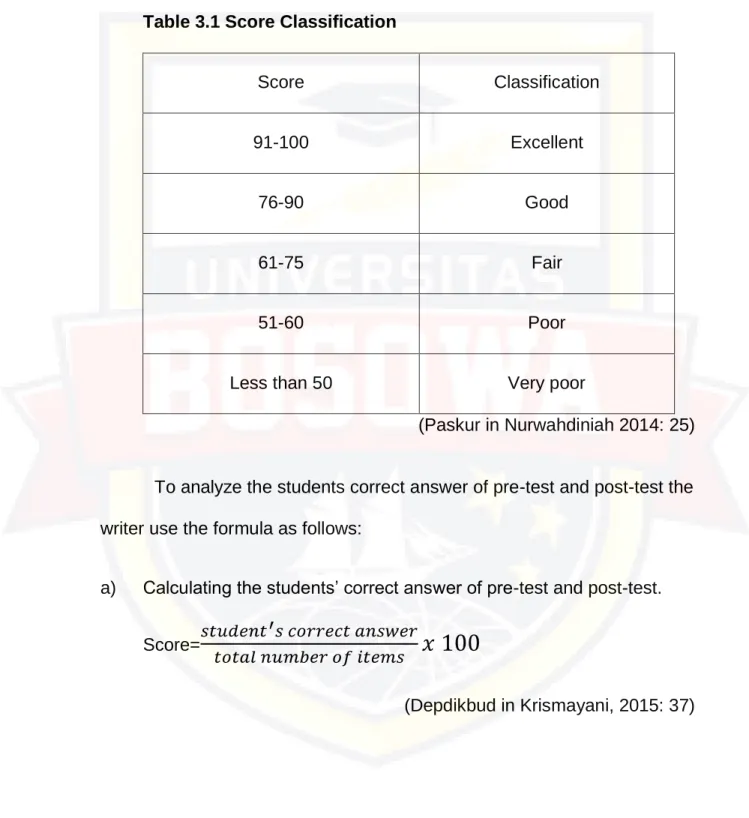
Findings
- The Result of Students’ Speaking Comprehensibilty
- The Total Result of Analysis of Students’ Speaking Ability
This test is to know the speaking ability of the students after the students get the treatment. The pre- and post-test data in Table 4.3 show that there was a significant difference in students' speaking skills in accuracy after the treatment was given. Therefore, the mean score result indicated that the speaking accuracy of students was also strongly influenced by the scaffolding talking technique.
The data for the pre-test and post-test in table 4.4 show a significant difference in the students' speaking performance in fluency after the given treatment. The standard deviation for the pre-test is 0.60, while the standard deviation for the students' post-test is 0.71. The standard deviation of the students' posttest is higher than the standard deviation of the students'.
The data from the pre-test and post-test on table 4.5 show a significant difference of the students' speaking performance in intelligibility given after treatment. The average score of students' pre-test in intelligibility is 2.28 and the average score on post-test is 0.6. The result of the average score therefore indicates that students' speaking intelligibility can be influenced by scaffolding conversation technique.
Table 4.6 above shows that the average score of the students in the pre-test in comprehension is 6.75 and the average score in the post-test is 9.17. The average classification result showed that students' speaking is also greatly influenced by the scaffolding technique.
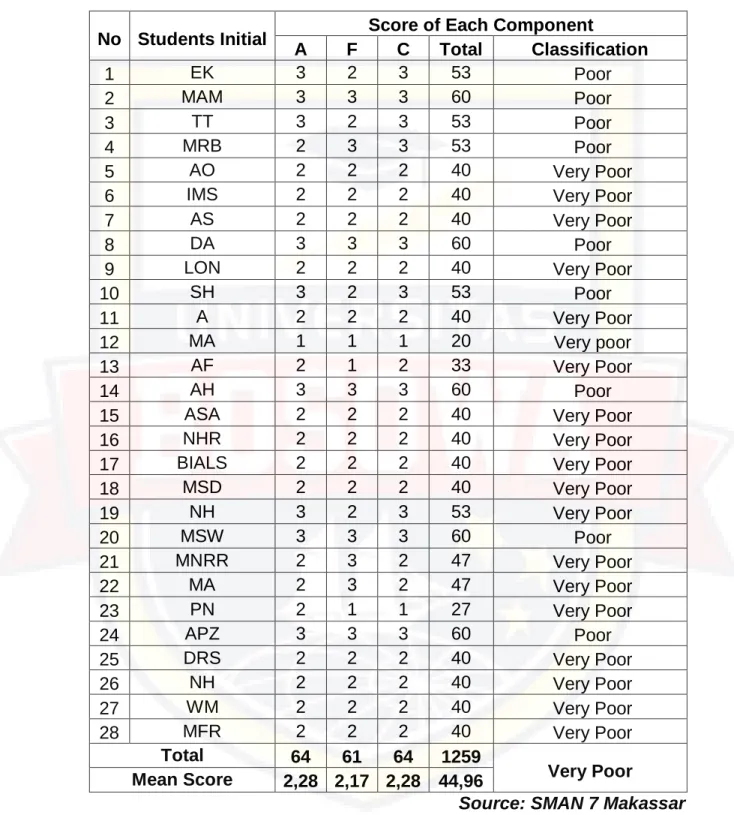
Test of significance (t-test)
Because the mean score is an average value of the students and the post-test mean is higher than the pre-test mean after the treatment.
Discussion
Most students could arrange text using appropriate conjunction and express their sentence in appropriate sentence. The students got some new words during the discussions about the topic they were discussed. Most of the students could keep their speech clear and fluent because in group discussions the students were not shy to speak anymore.
According to Fulcer, in order to be clearly understood by the listener, the speaker must take care of his accent or pronunciation, intonation and the speech must be correct and fluent. Students were able to communicate with others in the group while preparing the speech. This means that by using scaffolding speaking technique which has been applied in this research, there were improvements in each of the speaking aspects because this technique allowed the students to interact with the other members of the group.
Silberman (1996:99) argues that one of the best ways to create active learning is to give learning assignments that are carried out in a small group of students. The support of peers and the diversity of viewpoints, knowledge and skills help to ensure that collaborative learning becomes a good part of the classroom learning climate. Therefore, the students would have opportunities to interact with each other, transfer their knowledge, be the model and supporter and competitor for their member of the group.
Based on the observations during the pre- and post-test, it has been found that there is improvement at each meeting. By using scaffolding talk in this study, there were improvements in student participation in the English speaking class.
CONCLUSION AND SUGGESTION
Conclusion
Hence, they become more confident to speak up in giving their ideas in group discussion. Most students are interested in learning speaking skill using scaffolding technique because scaffolding directly gave an opportunity to students to speak and gave them more courage to improve their speaking skill .
Suggestion
Therefore, never be shy to speak up and never be afraid to make mistakes because mistakes are part of the learning process. The effect of giving direction method on students' speaking skill in second year of SMPN 25 Makassar. The students' speaking ability through guided question method (A Classroom Action Research at the Second Year Students of SMP Negeri 4 Sukamaju).
The effect of the speaking stage method on the speaking ability of students in the third semester of the university '45'. Implementation of English Meeting Club Towards Speaking Ability in Third Semester of Bosowa University 45 Makassar. Using improvisational exercise technique in English language teaching to improve students' speaking skills in eight-year-old SMP 6 Masamba students.
The use of soundscape strategy to increase students' speaking skill at SMA Negeri Sano Nggoang Manggarai Barat. Improving students' speaking ability using SODA strategy at the second grade of SMA Negeri 2 Kei Kecil. Improving speaking ability throws Small groups Discussion of the third year students of SMP 25 Makassar.
Penggunaan teknik scaffolding speaking untuk meningkatkan keterampilan berbicara siswa (Penelitian tindakan kelas siswa kelas VIII Mts Negeri Andong tahun ajaran 2013/2014. Standar kompetensi: Siswa diharapkan mampu berbicara dengan baik dan benar sesuai tata bahasa aturan berdasarkan materi yang akan diberikan dan mampu memahami materi yang diberikan.
Instrument of the Research
Instrument of the Research in Pre-test “TELEVISION”
Recording Sheet in Pre-test
Instrument of the Research Treatment TELEVISION
Instrument of the Research in Post-test Answer the questions below orally!
Recording Sheet in Pre-test
Appendix 8: Students’ Score and Percentage in Pre-test and Post- test
- Accuracy
Appendix 7: Students’ Score and Percentage in Pre-test and Post- test
- Fluency
- Comprehensibility
Students’ Total Score
DATA OF ASSESMENT 1. Data for Accuracy
DATA OF ASSESMENT 2. Fluency
DATA OF ASSESMENT 3. Comprehensibility
STUDENTS’ SCORE IN PRE-TEST AND POST-TEST
Mean Score of the Students’ Pre-test and Post-test in Accuracy
Mean Score of the Students’ Pre-Test and Post-Test in Fluency
Mean Score of the Students’ Pre-Test and Post-Test in Comprehensibility
Mean Score of the Students’ Pre-Test and Post-Test in Speaking Ability
THE T-TEST ANALYSIS
The distribution table of critical value-t
Pictures
The researcher was introduce herself
Picture 2: The researcher was explaining the scaffolding talk technique
A student was speaking in pre-test
A student was speaking in post-test
